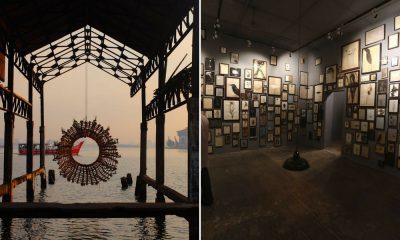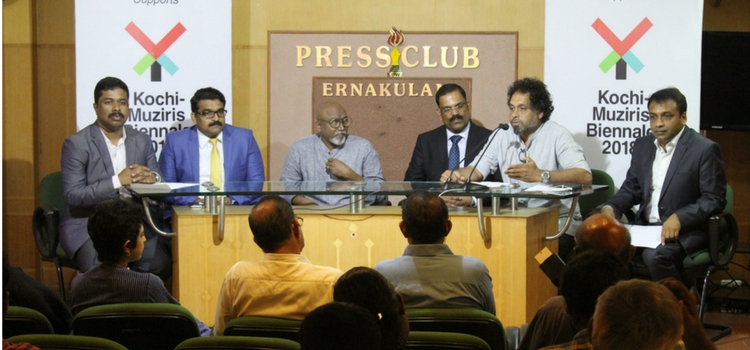Art
Anita Dube: The FeminARTzie who’s all set to curate KMB ‘18
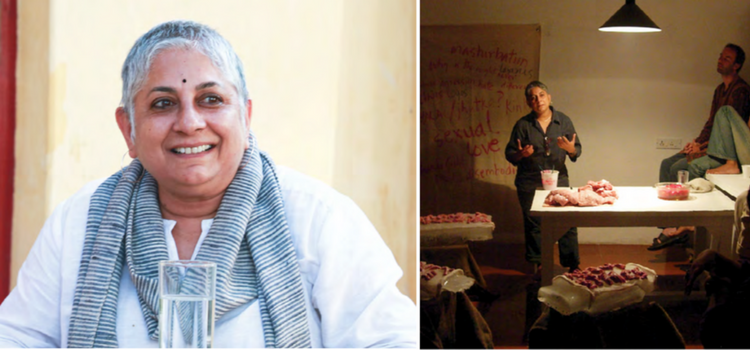
The First Woman of the Kochi Muziris Biennale gives us an exclusive insight into her artistic processes and what she has in mind for KMB ’18
Text: Rochelle D ‘souza
Queer, feminist, radical, dauntless, evocative and provocative, she may be all of 4 ft 10 inches in height, but her ideals, her opinions, her muses and most of all, her conceptually rich politically charged oeuvre stands tall and towering, all cloaked in their skins of velvet. Anita Dube, the Biennale’s first woman curator has already got the art world biting their nails in excitement as they wait to see what she has in store for the next edition, waiting to get the slightest clue of the direction in which her curatorial vision is heading and hastily marking their calendars for December 12, 2018.
Anita is what Bose Krishnamachari, calls a “thinking artist”. Her artistic practice, which spans across varying mediums brings in a perspective that will make for varied experiences and resonances in a space as adaptive and be accommodating as the Biennale. Here’s a short excerpt of an interview with Anita shortly after the announcement of her curatorship.
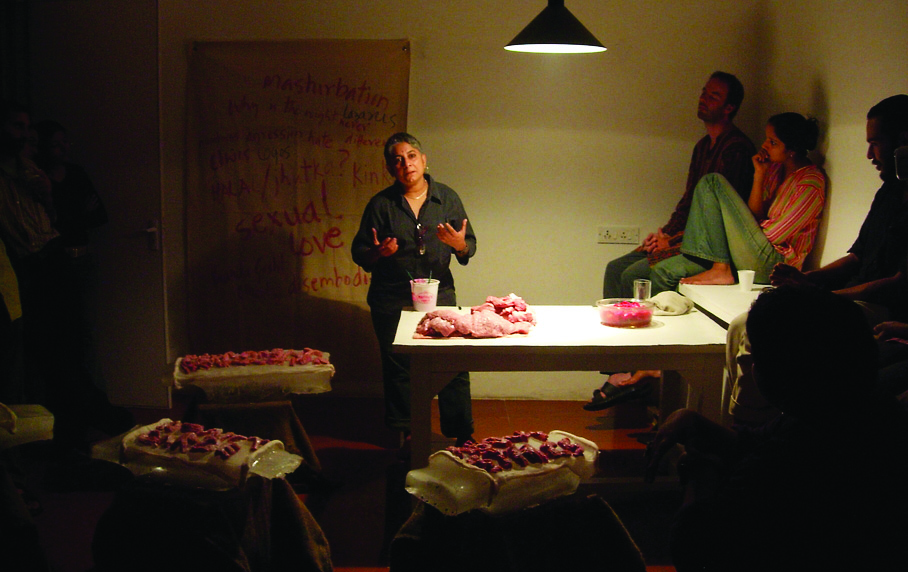
How did you react to the news of being chosen as the next curator and also the first female curator for KMB?
Honestly, it is a great honor and also a very big step that the Biennale Foundation and the panel has taken in the right direction by choosing a woman to lead this critically acclaimed festival of art. International art festivals have shied away (intentionally or unintentionally) from choosing female curators, I mean it was only after 42 years (10 editions) of the Documenta in in Kassel, Germany before they chose their first female curator, so this really is a big deal. The task that lies ahead of me is daunting, but one that I eagerly look forward to.
I know it’s still very early to say, but do you have a vision for KMB’18?
It’s still sinking in for me, and I really need to sit down and collect my thoughts, but yes there were a few things that I knew I wanted to do the instant they announced me as the next curator. Call it intuition or a gut instinct, but I instantly knew I wanted to do something along the lines of alienation. Alienation in terms of society, in terms of art and in terms of creating a sense of alienation. I also plan to foreground female sensibilities as it is one of my key concerns and also a sort of self-prescribed duty as the first female curator.
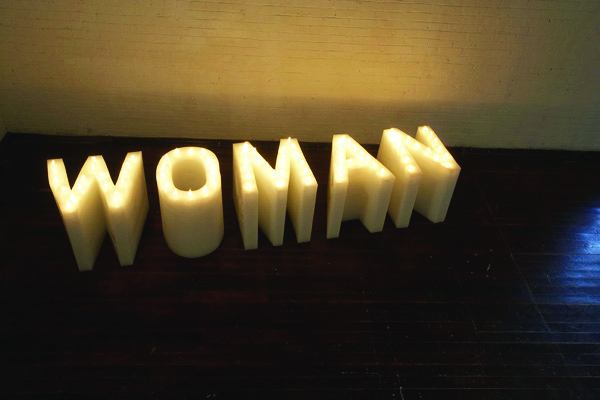
How do you intend to choose the mediums that will be showcased in the next edition of biennale that you are curating?
The concept drives the mediums. For example, although I studied art history and I love text and I read poems and novels most of my life, using text as a sculptural material did not exist in my mind until 2005 and back in 1997 when I made ‘Blood Wedding’ I never knew I would work with bones. It is out of a certain kind of a situation and from the building on a concept that I come closer to things and understand them and brood over them that’s how I associate with each medium and decide how I’m going to use them in my works and now probably in my curatorial vision.
Performance art is your forte and holds a significant place in your oeuvre. Tell us a little bit about the kind of performance practices that you employ?
Performance really is a big part of what I do, but I love to play with the idea of this so called performance. I had done a performance piece at KHOJ called ‘Keywords’ where I cut out four phrases (Permanent Revolution, Sexual Love, Avant Garde and About Ethics) from slabs of meat and I had a canvas behind me where I engaged with the audience and discussed and tried to excavate the fact that a word doesn’t have a singular meaning but could have ‘n’ number of resonances and meanings within its singularity. There was also my work in wax where I had the words ‘WOMAN’ the work could be burnt and when it was it moved from form to formless and served as an expression of my experience as a woman, a kind of slow burning that you feel inside, this burning, melting, a kind of anguish, they experience if life. In terms of the meat and of the melting wax there is a kind of performance that is taking place here. The words and the works perform and I find this fascinating as it can move from form to formless and its purpose goes beyond what it could be and be open to being seen as so much more.
Will we be seeing a lot of performance pieces in the next biennale?
Most definitely. Performance is a multi-sensory experience and that transition that the work makes in the process of the performance holds a sense of catharsis which viewers will pick up on.
Art
Navratri 2024: Celebrating the Nine Colours and Their Significance
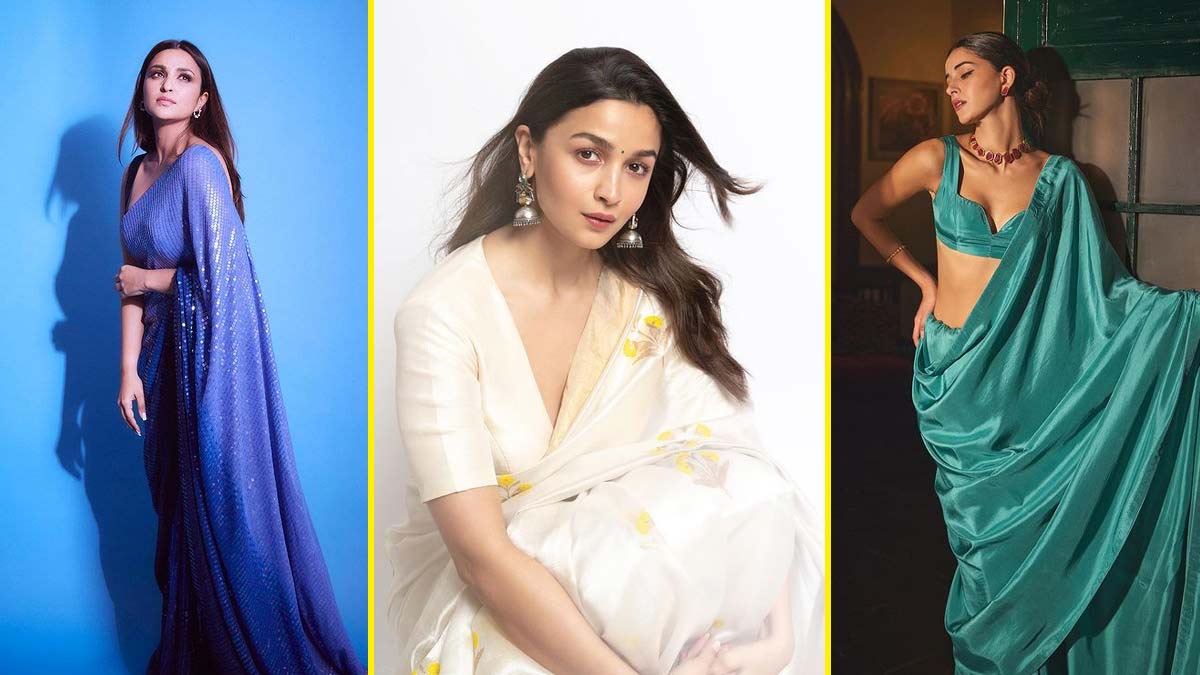
Navratri, the festival that spans nine nights, is one of the most auspicious and widely celebrated festivals in India. Dedicated to the worship of Goddess Durga in her nine forms, each day of Navratri holds special significance, marked by a distinct color that carries deep spiritual and cultural meaning. As we prepare for Navratri 2024, let’s explore the nine colors associated with each day, their significance, and how they inspire devotion, positivity, and harmony.
Day 1: Yellow
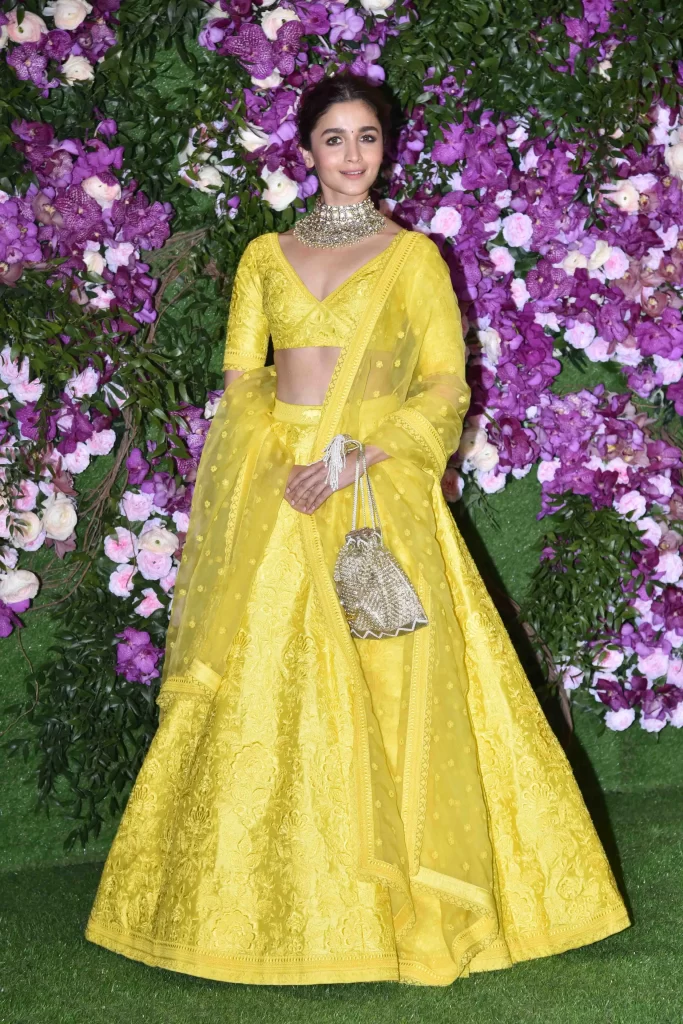
On Thursday, embrace the uplifting energy of yellow as you celebrate Navratri with optimism and joy. This warm and cheerful color symbolizes happiness and radiates positivity, keeping you in high spirits throughout the day.
Day 2: Green
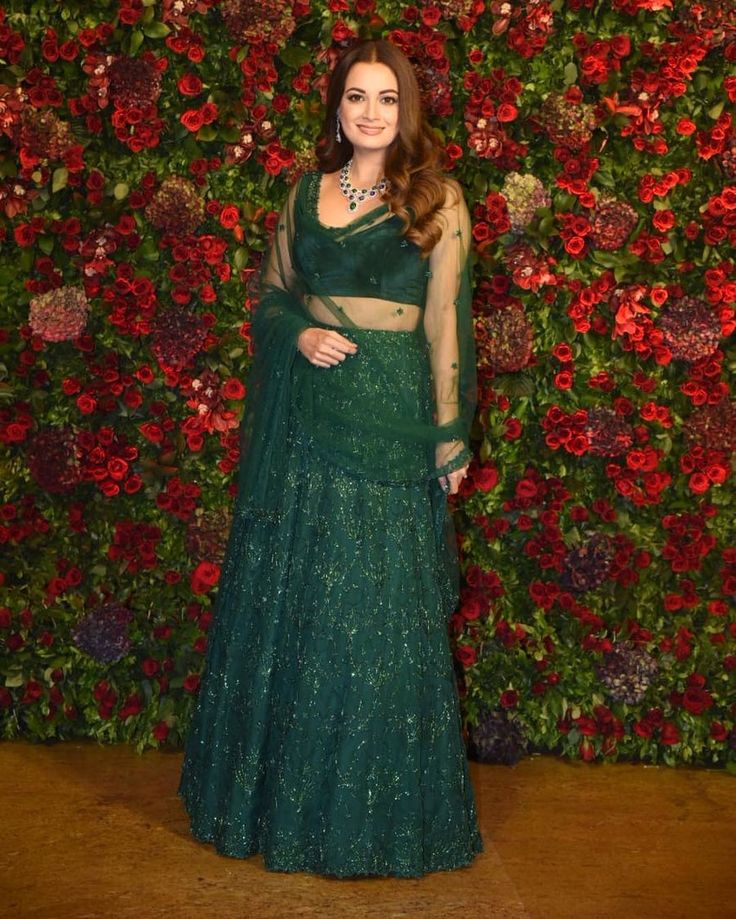
On Friday, wear green, a color that represents nature, growth, and harmony. It evokes a sense of peace and serenity, while also symbolizing new beginnings. Let the vibrant energy of green invite tranquility and the blessings of the Goddess into your life.
Day 3: Grey
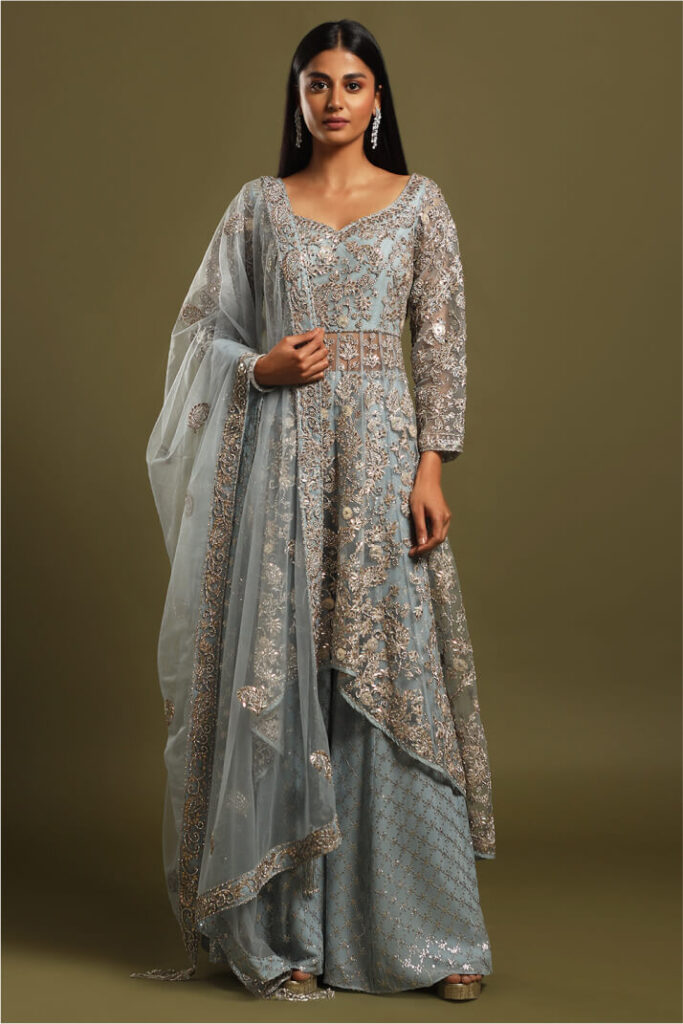
Saturday calls for the subtle sophistication of grey. This balanced color keeps you grounded and calm, symbolizing composure and understated elegance. It’s perfect for those who want to participate in Navratri with grace while making a refined style statement.
Day 4: Orange
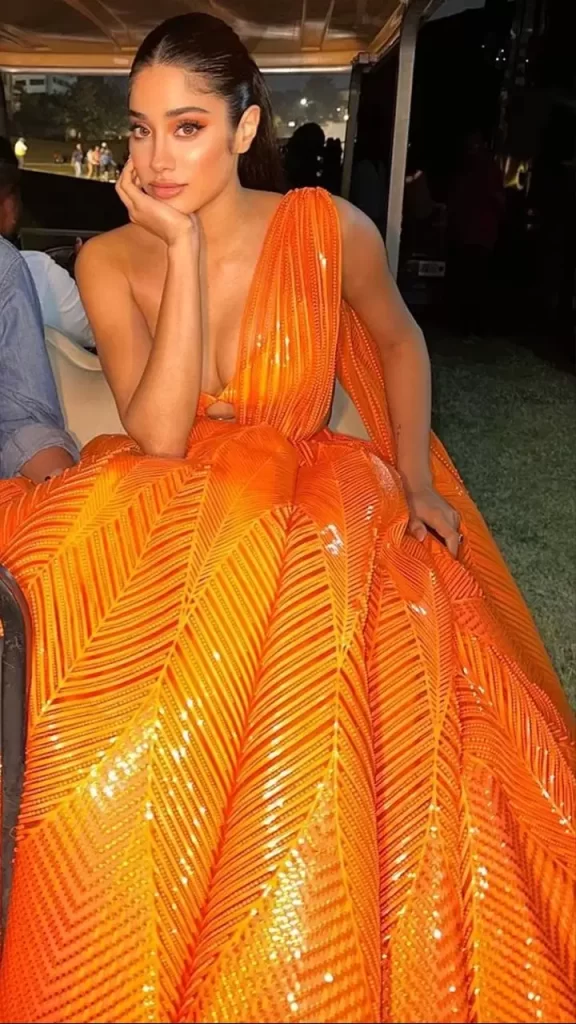
On Sunday, adorn yourself in the vibrant hue of orange. This color embodies warmth, exuberance, and positivity. Wearing orange during Navratri invokes an upbeat energy, bringing vitality and a lively spirit to your celebrations.
Day 5: White
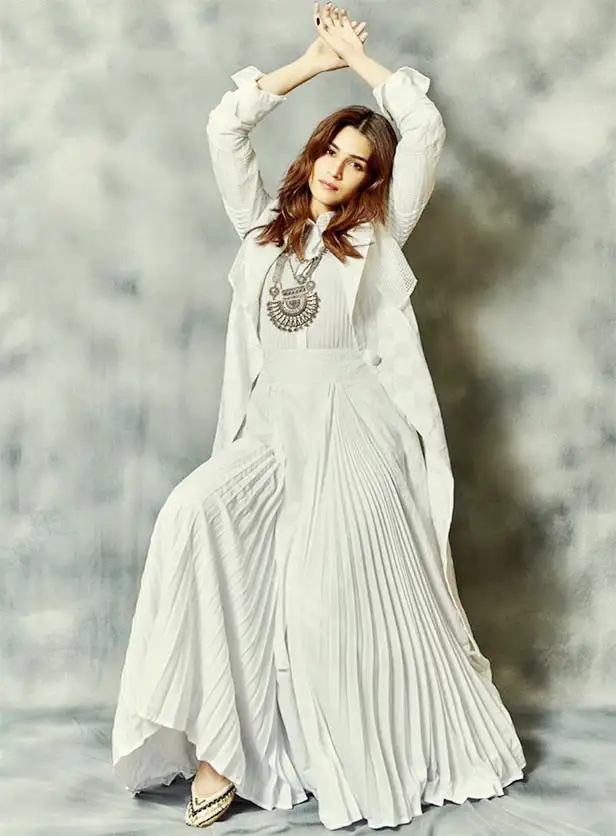
Start your Monday with the purity and serenity of white. Associated with innocence and spiritual clarity, this color invites inner peace and helps you connect with the divine blessings of the Goddess, offering a sense of security and calm.
Day 6: Red
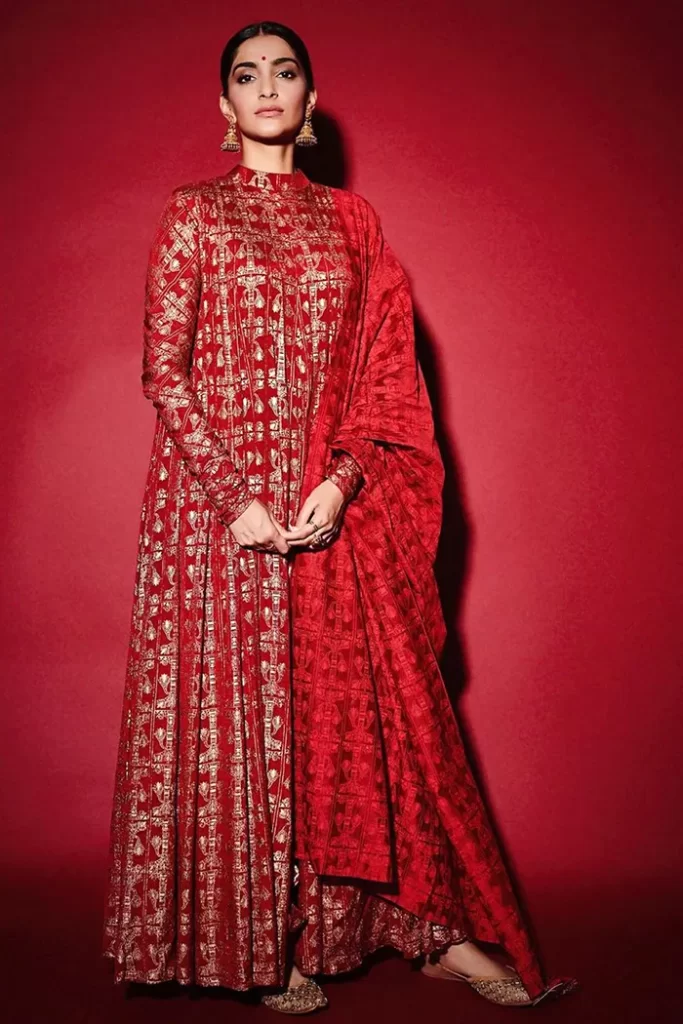
On Tuesday, red takes center stage, symbolizing passion, love, and strength. As one of the most auspicious colors, red is often offered to the Goddess in the form of a Chunri. Wearing red fills you with energy, vigor, and the vibrant spirit of Navratri.
Day 7: Royal Blue
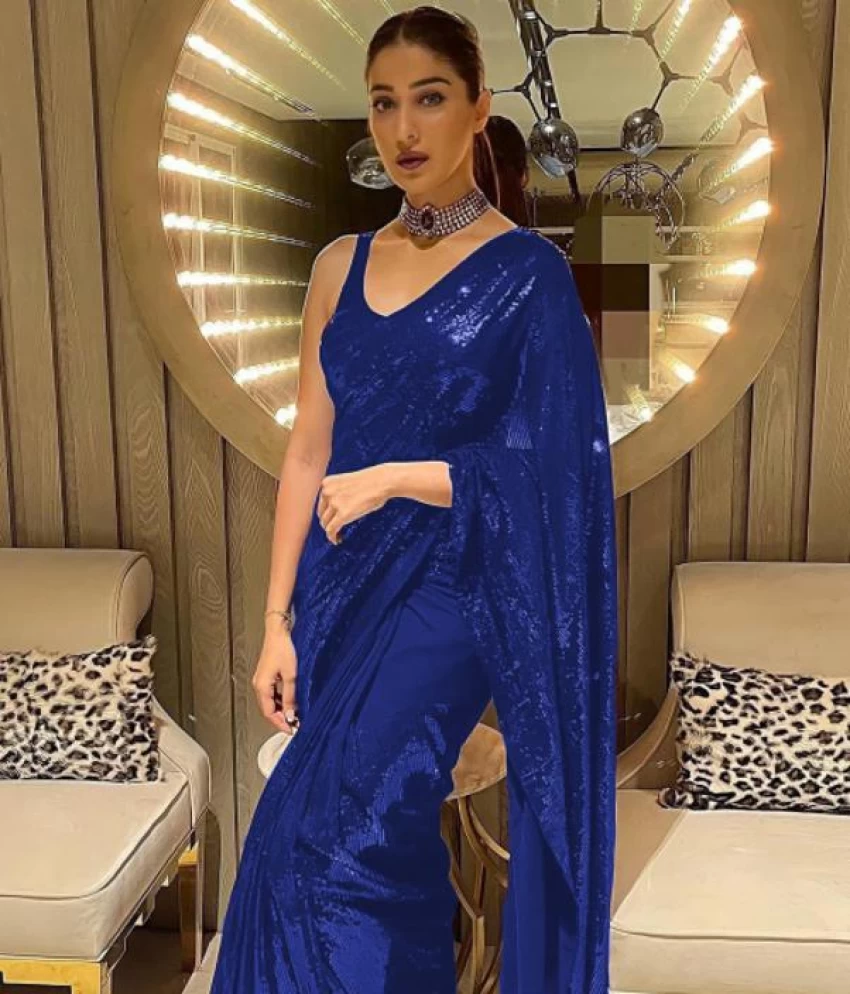
Wednesday’s color is royal blue, representing elegance, richness, and tranquility. This deep, vivid shade of blue exudes confidence and sophistication, making it an ideal choice for those who want to celebrate Navratri with style and grace.
Day 8: Pink
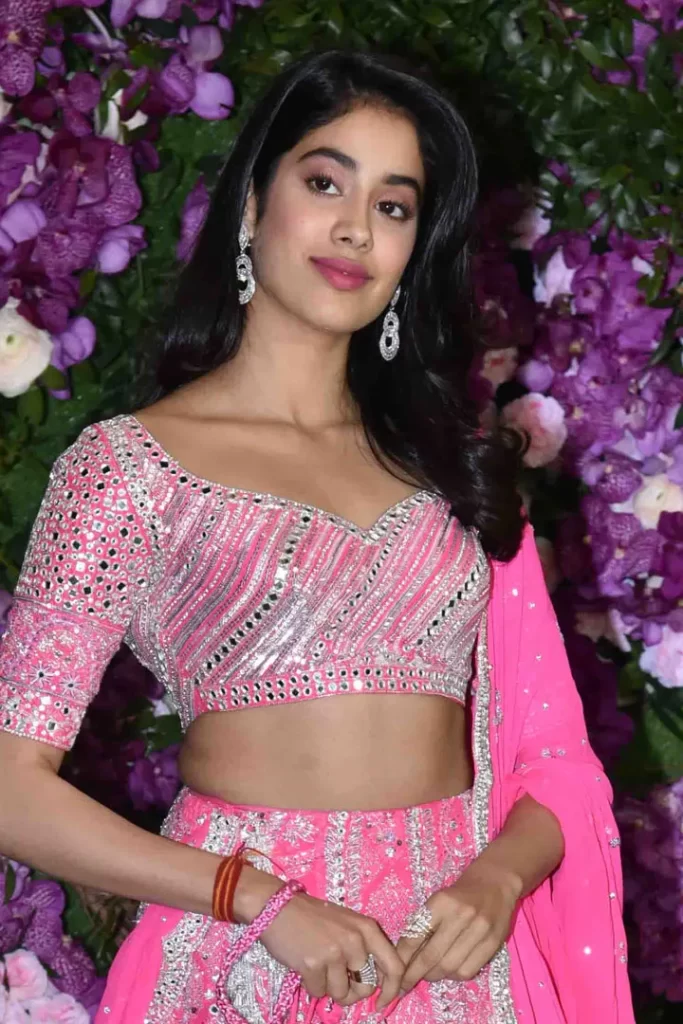
On Thursday, don the charming hue of pink, a symbol of universal love, affection, and harmony. Pink is a color that adds a soft touch of warmth and approachability, making it perfect for creating a loving and joyful atmosphere during the festivities.
Day 9: Purple

On the final day of Navratri, purple takes the spotlight. Associated with luxury, nobility, and grandeur, purple invites opulence into your life. Wearing this regal color while worshipping Navdurga bestows blessings of prosperity and richness, making it the perfect way to end your Navratri celebrations.
Art
Exploring the Rich Tapestry of Indian Art: A Journey Through State-Wise Traditional Paintings
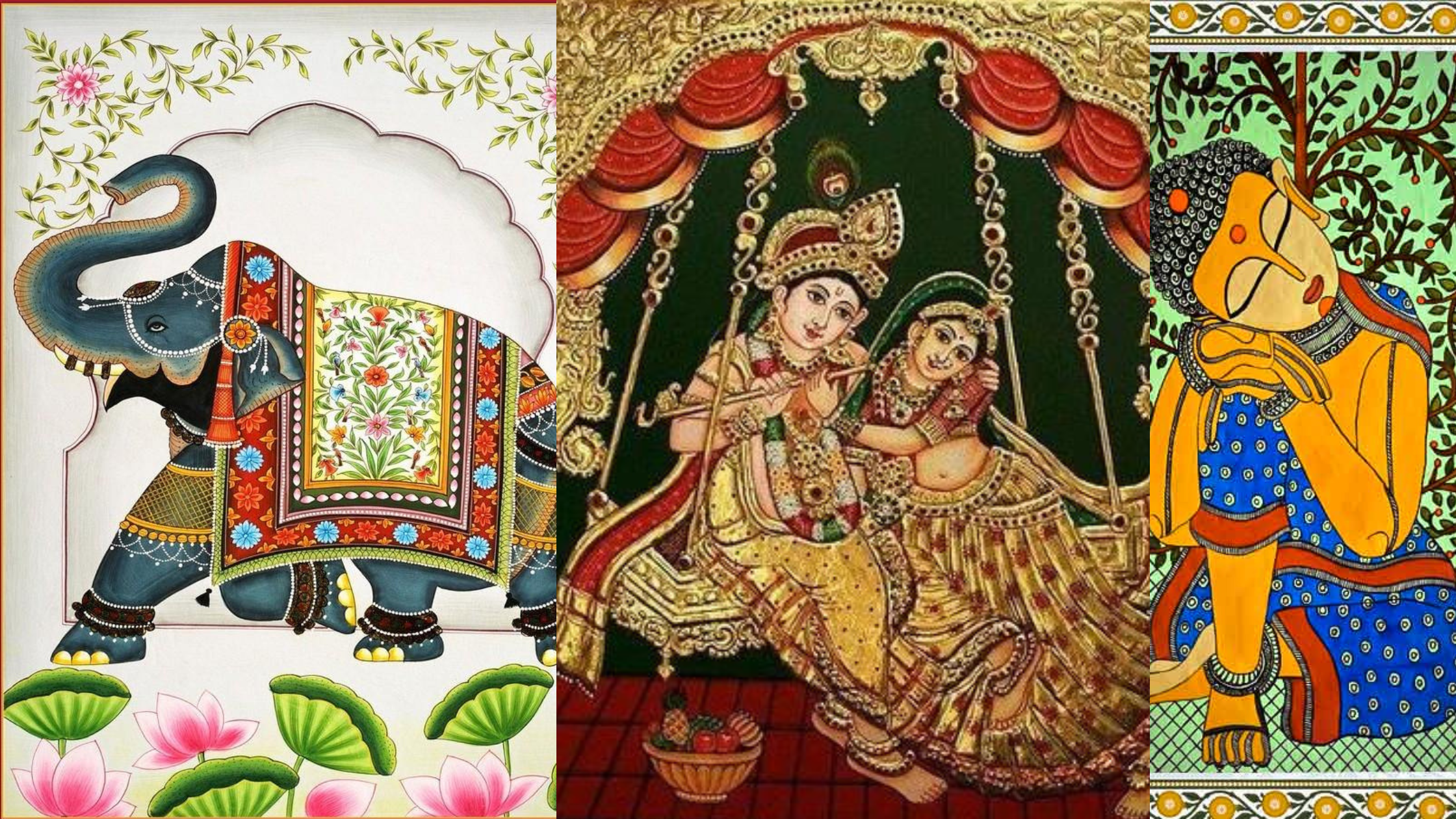
India’s artistic heritage is a vibrant mosaic, reflecting the diverse cultural traditions of its states. Each region has its unique style of painting, with techniques and themes passed down through generations. Let’s delve into some of the most iconic traditional paintings from different states of India.
1. Madhubani Painting (Bihar)
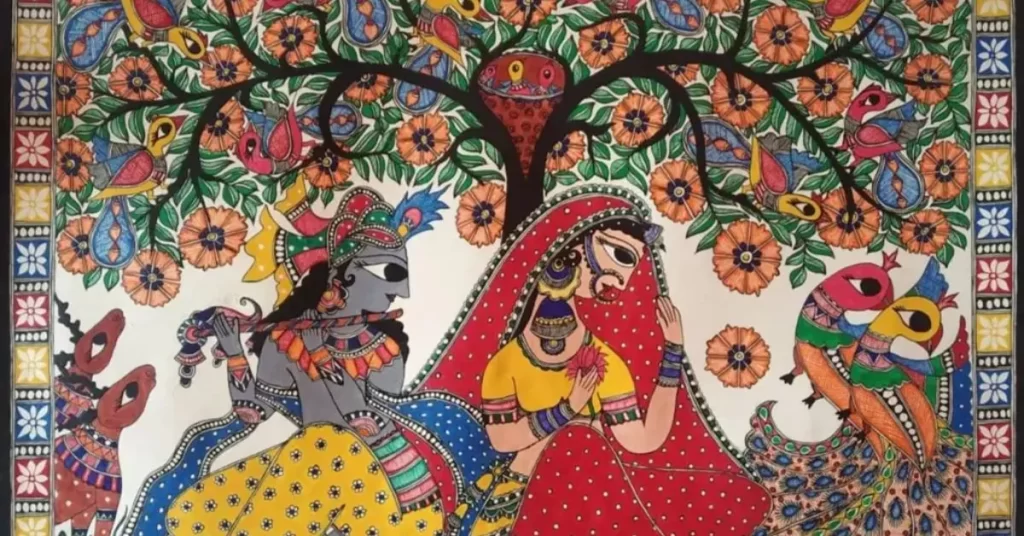
Originating from the Mithila region of Bihar, Madhubani painting is known for its intricate patterns, bold colors, and themes inspired by nature, mythology, and folk tales. Traditionally, these paintings were done on mud walls, but now they are also created on cloth, handmade paper, and canvas.
Distinctive Features: Use of natural dyes, double outlines, geometrical patterns, and motifs like flowers, animals, and deities.
2. Pattachitra (Odisha and West Bengal)
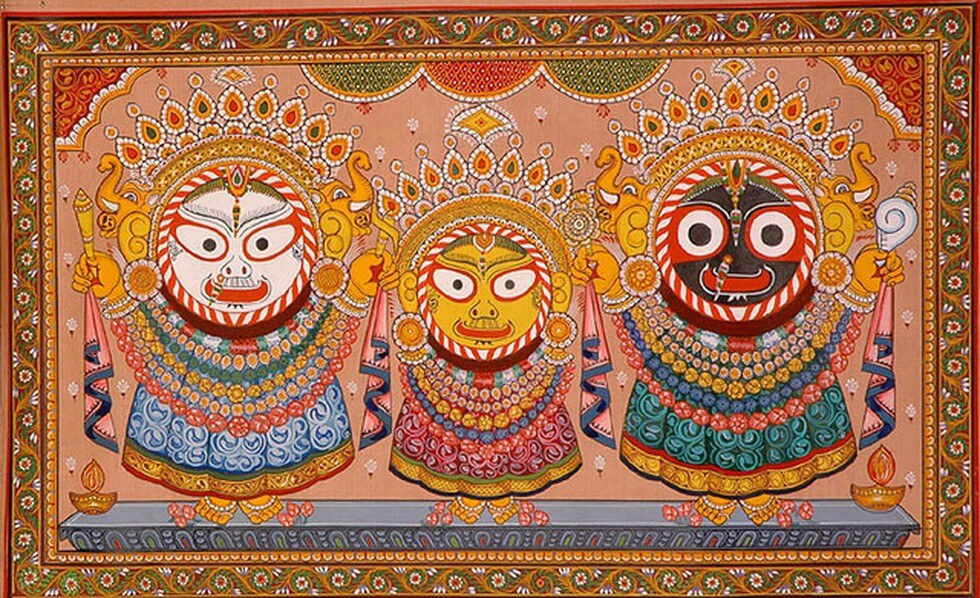
umaid art
Pattachitra, meaning ‘cloth painting,’ is an ancient art form from Odisha and West Bengal. These paintings depict mythological narratives, especially around Lord Jagannath, and are characterized by their intricate details and mythological themes.
Distinctive Features: Fine detailing, elaborate borders, vibrant use of colors, and the use of natural ingredients for dyes.
3. Warli Art (Maharashtra)
Warli art is a form of tribal painting from Maharashtra, traditionally done by the Warli tribe. It primarily uses white pigment on a mud base to depict daily activities, such as farming, hunting, and dancing, in a minimalistic yet expressive manner.
Distinctive Features: Simple geometric shapes like circles, triangles, and squares, which represent different elements of nature and human life.
4. Tanjore Painting (Tamil Nadu)
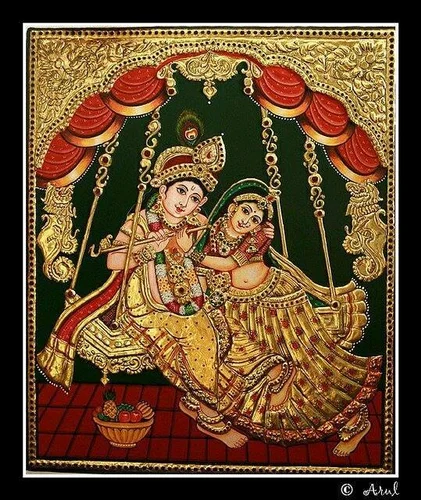
Tanjore (or Thanjavur) paintings, originating from Tamil Nadu, are known for their rich colors, surface richness, compact composition, and use of gold foil. They often depict Hindu gods and goddesses, with a focus on Lord Krishna and other deities.
Distinctive Features: Use of vibrant colors, gold leaf, and inlay work with semi-precious stones on wooden boards.
5. Pichwai Painting (Rajasthan)
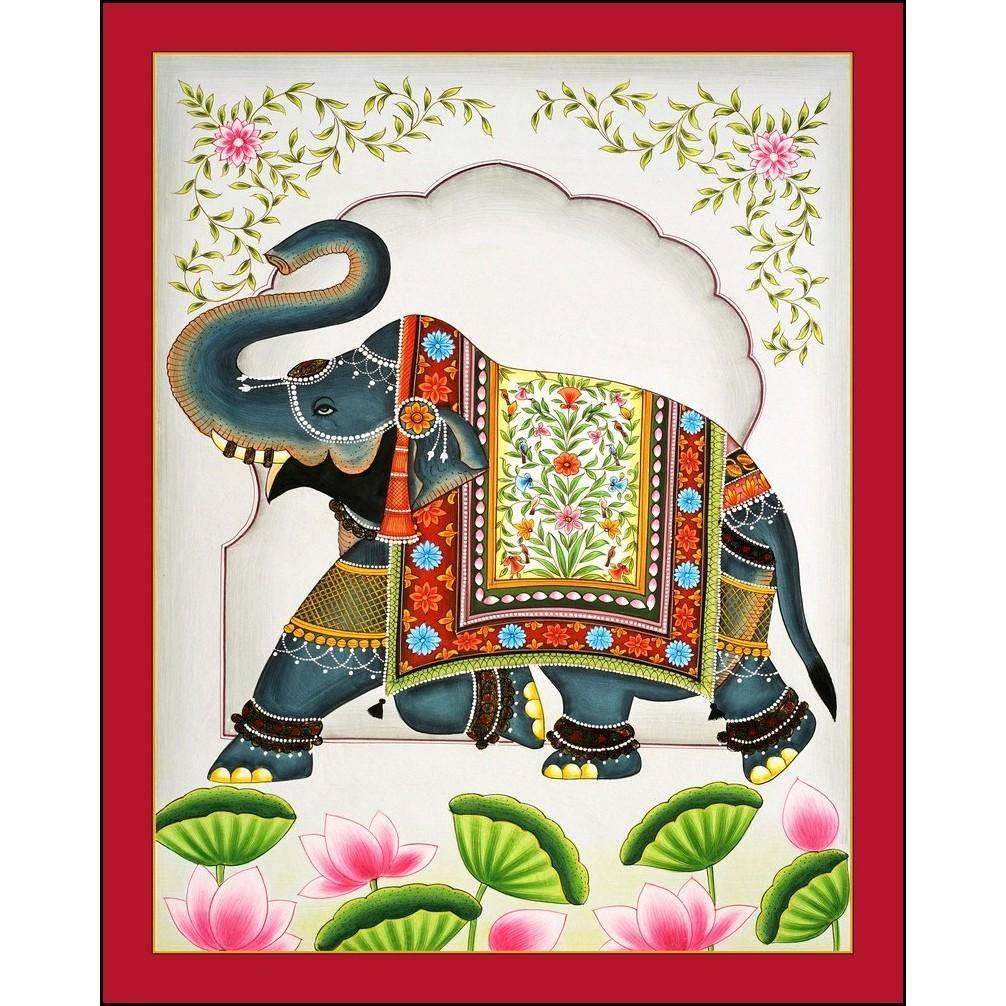
Pichwai paintings, hailing from Rajasthan, are intricate paintings that portray the life of Lord Krishna, especially in the Nathdwara temple. These paintings are traditionally done on cloth and used as wall hangings behind the deity in temples.
Distinctive Features: Detailed depiction of Lord Krishna’s life, use of bright colors, and the portrayal of various scenes from the Bhagavad Purana.
6. Phad Painting (Rajasthan)
Phad painting is a narrative scroll painting from Rajasthan, where the stories of folk deities like Pabuji and Devnarayan are depicted. The paintings are done on long pieces of cloth and are used in religious storytelling.
Distinctive Features: Bold lines, earthy colors, and the depiction of deities and their exploits.
7. Kalamkari (Andhra Pradesh)

Kalamkari, literally meaning ‘pen work,’ is an art form from Andhra Pradesh that involves hand-painting or block printing on fabric. The themes are largely mythological, with stories from the Ramayana and Mahabharata being common subjects.
Distinctive Features: Intricate handwork, natural dyes, and a distinctive color palette dominated by earthy tones.
8. Pithora Painting (Gujarat and Madhya Pradesh)
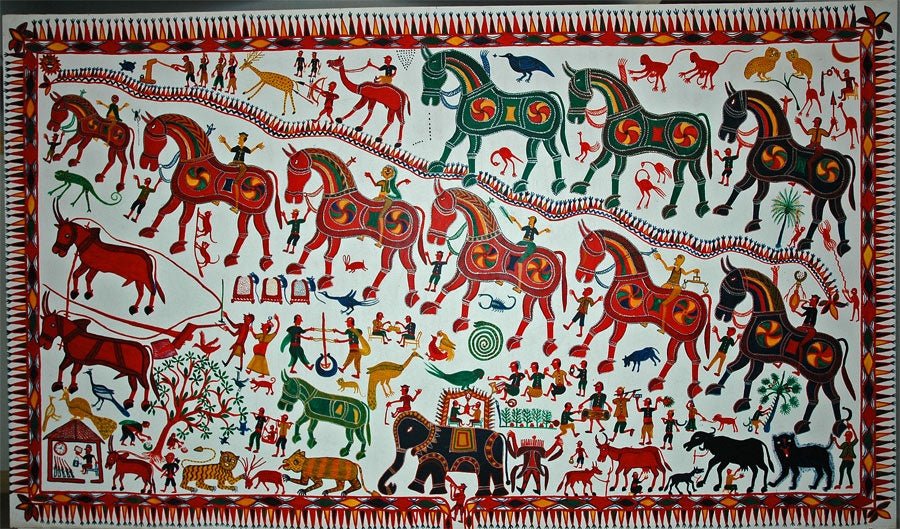
Pithora paintings, created by the Rathwa and Bhilala tribes of Gujarat and Madhya Pradesh, are done on the walls of their houses. These paintings are part of a ritual to invite the gods and ensure prosperity and happiness.
Distinctive Features: Vibrant colors, ritualistic significance, and the depiction of gods, animals, and scenes from daily life.
9. Chitrakathi Painting (Maharashtra)
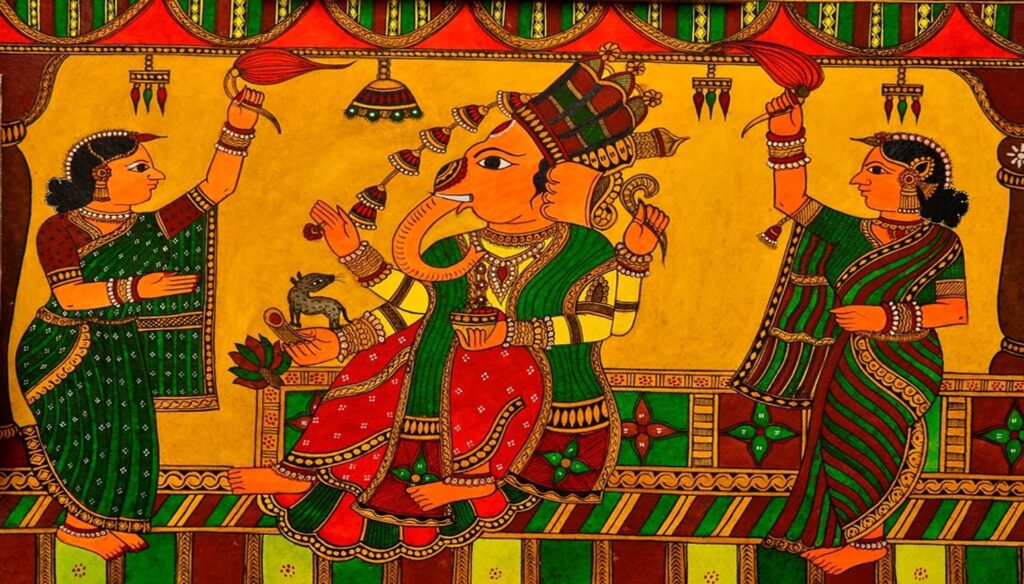
Chitrakathi is a traditional art form from the Maharashtra-Karnataka border, where paintings are used as visual aids in storytelling. These paintings often accompany performances that narrate stories from epics like the Ramayana and Mahabharata.
Distinctive Features: Simple yet expressive figures, use of natural colors, and the narrative style.
10. Saura Art (Odisha)
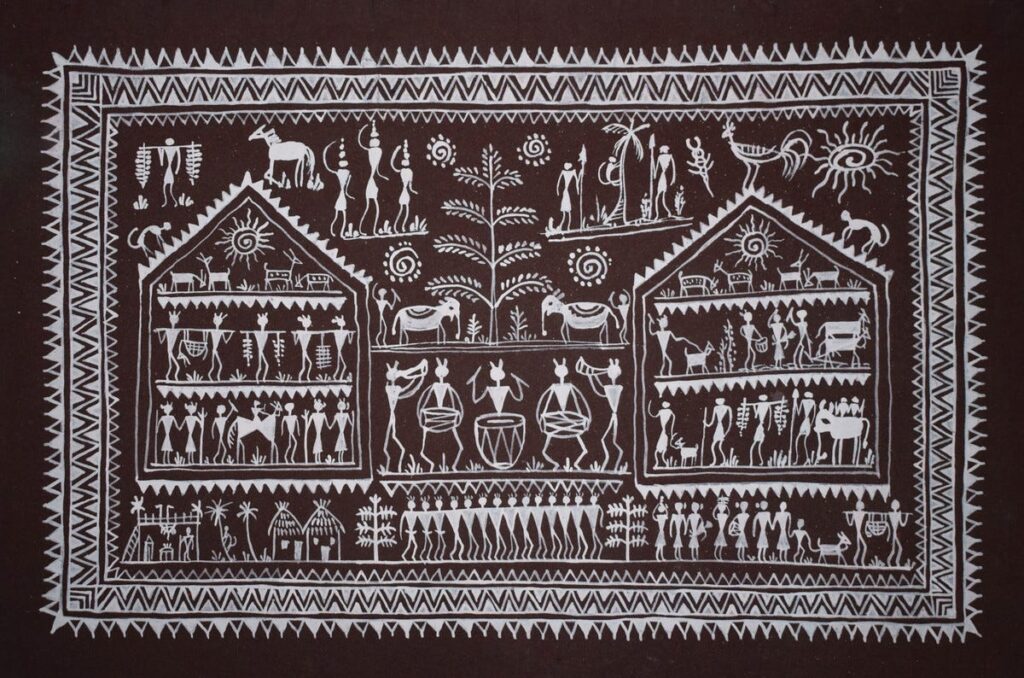
Saura art is a form of mural painting by the Saura tribe of Odisha. It is similar to Warli art but has its unique elements, depicting the tribe’s daily activities, rituals, and deities.
Distinctive Features: Monochrome palette, linear style, and the depiction of nature and community life.
The diverse painting styles of India offer a glimpse into the country’s rich cultural heritage. Each state’s art form is a testament to the creativity and traditions that have been nurtured for centuries. By exploring these traditional paintings, we not only appreciate their beauty but also connect with the stories and values that have shaped India’s cultural landscape.
Art
The Microscopic Handbag Phenomenon: MSCHF’s Bold and Tiny Louis Vuitton Creation
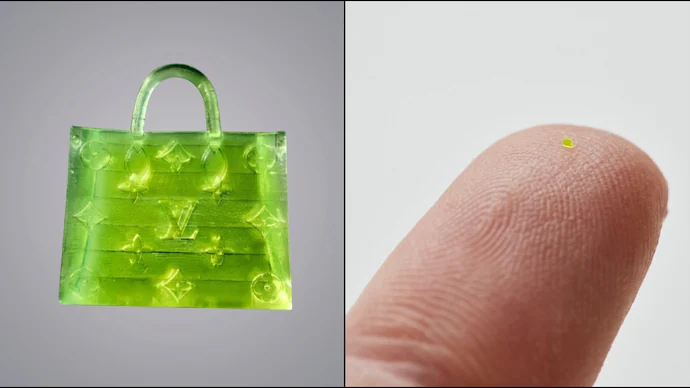
In the realm of fashion, innovation knows no bounds, and the boundary-pushing collective known as MSCHF constantly proves this point. Their latest creation, a microscopic handbag inspired by Louis Vuitton, has taken the industry by storm, captivating fashion enthusiasts around the globe. Breaking free from traditional size constraints and redefining functionality, this miniature accessory has ignited curiosity and sparked a sensation. Join us as we delve into the extraordinary world of MSCHF’s microscopic handbag, exploring its origins, unique features, and the remarkable buzz it has generated.
MSCHF, renowned for their unconventional and thought-provoking projects, partnered with luxury fashion house Louis Vuitton to unleash a game-changing collaboration. Together, they birthed a surprising twist on the classic handbag, pushing the boundaries of scale to an entirely new level. The microscopic handbag challenges the norm and introduces an audacious new concept.
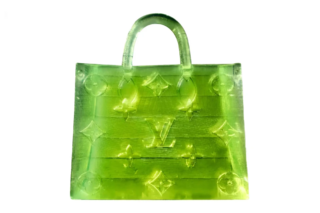
Measuring a mere 1.5 inches in height, the microscopic handbag is a masterpiece of miniaturization. This whimsical accessory captures the essence of a traditional Louis Vuitton purse, complete with the iconic monogram pattern and signature leather trim. Despite its minuscule size, it exudes luxury and craftsmanship, embodying the brand’s prestige and aesthetic.
The MSCHF microscopic handbag represents a captivating fusion of fashion and art. It blurs the lines between these creative realms and prompts us to question our perception of material possessions. Through this micro-sized wonder, MSCHF challenges our understanding of fashion’s role in society and invites us to contemplate the value we attach to material goods.
Since its introduction, the microscopic handbag has caused a viral sensation across social media platforms. Its diminutive size and unexpected collaboration have captivated fashion enthusiasts and sparked intriguing discussions. This extraordinary creation serves as a catalyst for conversations about fashion trends, the power of satire in design, and the evolving landscape of the industry. Once again, MSCHF has successfully captured the attention of the fashion world, pushing boundaries and reshaping our perception of what is considered fashionable.
MSCHF has cemented its legacy as a disruptive force in the fashion and art realms. Their innovative and thought-provoking projects consistently challenge norms and captivate audiences. With the microscopic handbag, they have once again showcased their ability to generate intrigue, spark conversations, and inspire wonder within the industry.
In conclusion, the MSCHF microscopic handbag stands as a testament to bold creativity and audacity in the world of fashion. Its tiny size and unexpected collaboration with Louis Vuitton have shattered conventional handbag design and ignited curiosity on a global scale. This extraordinary creation not only exemplifies the artistry and innovation of MSCHF but also invites us to reflect on the ever-evolving nature of fashion and its profound impact on our collective imagination. As we eagerly anticipate MSCHF’s next groundbreaking venture, one thing is certain: they will continue to redefine the boundaries of what is possible in the world of fashion.
-

 Style11 months ago
Style11 months agoBridal Guide : Best Looks of Radhika Merchant Ambani
-
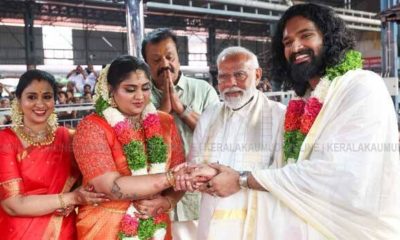
 Entertainment1 year ago
Entertainment1 year agoThe Stunning looks from Bhagya Suresh’s Wedding
-

 Fashion1 year ago
Fashion1 year agoMost Discussed Ajrakh Saree of Alia Bhatt
-

 Entertainment1 year ago
Entertainment1 year agoThe Most Stylish Guests of Bhagya Suresh Reception
-

 Entertainment1 year ago
Entertainment1 year agoBridal Bliss : All Bridal Looks of Swasika Vijay
-

 Movies1 year ago
Movies1 year agoA Nostalgic Journey Through Love &Cinema : Best Bollywood Romantic 90s Movies
-

 AD8 months ago
AD8 months agoPopular Curtain Fabrics to Consider for Your Home
-

 Fashion1 year ago
Fashion1 year agoMajor Denim Trends You Need To Know in 2024


